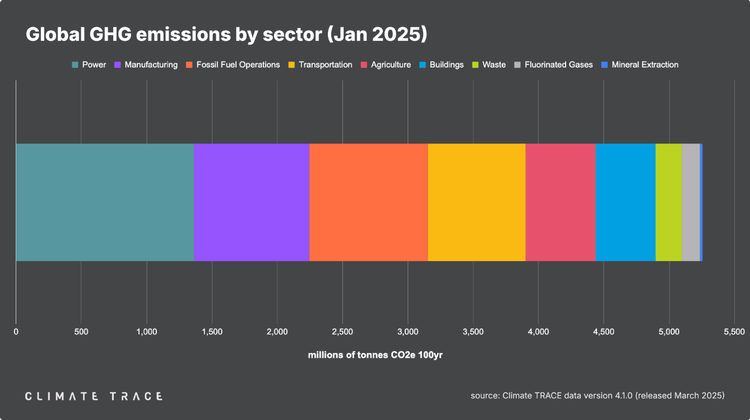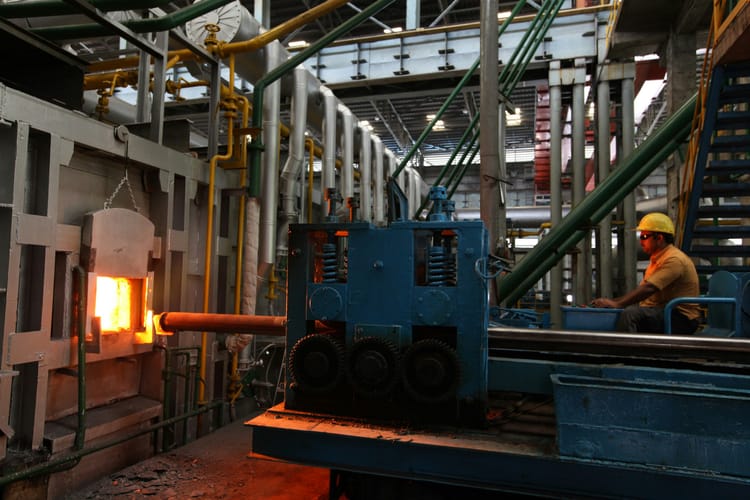Fostering an ethical and sustainable culture within organisations

Company culture can make or break sustainability objectives, yet for Chief Sustainability Officers, measuring, improving and achieving a sustainable corporate culture can be a daunting task.
For Chief Sustainability Officers or anyone else tasked with implementing a company’s sustainability strategy, ensuring that culture is aligned with these objectives is absolutely crucial. Time and time again, people in sustainability roles talk about the challenges of getting every layer of a company’s hierarchy on board for the sustainability transition, from the CEO and C-suite to procurement and HR managers.
The link between company culture and sustainability ambitions is intuitive: after all, “the targets and objectives that the company might set for themselves are going to be ultimately achieved by the people who are responsible for implementing those targets,” as Erica Salmon Byrne, Chief Strategy Officer and Executive Chair at Ethisphere, told CSO Futures.
Sustainable corporate culture: a top driver for talent retention
The achievement of sustainability goals will also depend on companies’ ability to attract and retain the right talent – and a sustainable corporate culture plays a crucial role there too. Gallup’s latest State of the Global Workplace survey found that globally, less than a quarter (23%) of employees feel engaged at work, while 59% are so little engaged they are considered to be “quiet quitting”.
Asked what they would change about their company, a majority of those (41%) pointed to culture, saying they would like more recognition and respect, more approachable managers or clearer goals. Organisations that invest in the implementation of best practices see massive improvements, with 72% of employees engaged.
Investing in “people sustainability”, described as “a holistic approach to corporate human capital practices, including diversity and inclusion, well-being, employee safety, and fair pay”, is therefore a cornerstone of the transition to a sustainable business model.
Measuring ethical culture
Ethisphere defines an ethical culture as one in which employees, no matter where in the world they might be located, feel empowered to ask for help when they need it, admit that they don't understand how to handle a situation, and have faith in the tools the company has available to help them achieve that.
“An ethical culture does not mean that everybody always makes the right choices. That's impossible. Another way to phrase it is as a psychologically safe culture: a culture where people feel comfortable using their voices,” Byrne added.
Assessing current culture is key in identifying areas that need improvement. It can be done through employee engagement and culture surveys, but not only. “One data set is never going to be your answer. It's all about pulling together the different inputs that tell you what's going on across the business,” she said. Among those inputs, she recommends looking at audits, participation in sustainability schemes, and especially employee turnover.
Ethisphere has also developed an ‘ethics quotient’ that measures indicators through management and governance practices, environmental and social impacts, as well as ethics and compliance programmes. The organisation ranks the world’s most ethical companies based on this analysis, but firms can also request to use it in order to benchmark themselves against their peers.
Sustainable corporate culture starts from the top
Once gaps and areas of improvement have been identified, culture change has to come from the top. “Sometimes culture can bubble up from the bottom, that’s where you get very organic interesting traditions that emerge from teams, but culture shifts really happen from the top down,” explained Matthew Cook, Founder of company culture consultancy theSHIFT.
There are many studies on the impact of CEOs and managers’ personalities on culture and firm performance. But perhaps the most telling statistic is the one gathered by Ethisphere’s global culture survey on raising the alarm about observed misconduct: for every one employee that calls the dedicated hotline, three go to their HR business partner, and six go to their manager.
Manager training is the hill Byrne is willing to die on. “Because at the end of the day, the person who is most influential on my behaviour I work is the person to whom I directly report, period,” she said.
In order to foster an ethical and sustainable corporate culture, leaders have to enact and exemplify the values they want to promote. That means that sustainability has to be made a strategic priority at the highest levels of the hierarchy. And it sometimes involves doing the inner work.
“So much of it comes down to personality, beyond just the desire to make the change, are they able to make the necessary behaviour change themselves to do it? It’s not therapy, but you get into quite deep coaching around, are they equipped to make the necessary internal changes,” noted Cook.
In his work to support corporate culture shifts, he sometimes refers clients to the Inner Development Goals (IDGs), a non-profit initiative developed to support faster action towards the achievement of the UN’s Sustainable Development Goals. On its website, the initiative states: “There is a vision of what needs to happen, but progress along this vision has so far been disappointing. We lack the inner capacity to deal with our increasingly complex environment and challenges.”
The IDGs present 23 skills and qualities considered crucial for leaders who address SDGs, along five dimensions: relationship to self, cognitive skills, caring for others and the world, social skills and enabling change.
“Do CSOs have a plan for how they’re going to meet the inner development goals needed to make that shift? If they feel that they can, amazing. If they need support, that’s probably where they would come to someone like us,” Cook told CSO Futures.
The role of training in shifting culture
After integrating sustainable and ethical values at the highest level of management, it’s important to train all employees. “How do you bring about behaviour change in your company? One of the first things you do is train everyone in the organisation, so you're all speaking the same language. Everyone needs to know what sustainability means and why it’s a business priority, not just an individual priority or a global issue,” said Nick Henderson-Mayo, Director of Learning and Content at compliance training firm VinciWorks.
Courses should include modules on everything that makes a sustainable and ethical culture: climate-friendly practices and environmental conservation, of course, but also health and safety, diversity, inclusion and governance. Henderson-Mayo recommends tailoring courses to each department and including real-life examples: “Off-the-shelf training is useful to a point, but if you can explain, how does that work in this office? And how does that work for your job? And how does that work for our particular industry? It just makes it a lot more real life, and I think usually, the message stays with people longer.”
Calls to action are also effective in terms of helping people integrate their new learnings. And breaking things down into small parts is crucial, particularly with a topic as large and anxiety-inducing as climate change.
Claire Gregory, a recent PhD graduate at the University of Surrey who studies the psychology of decision-making, explained: “Sustainability and climate change is such a large issue that it can often feel too big to tackle as an individual, which makes it hard to be motivated to make sustainable choices, as people often tend to feel overwhelmed. One of the ways to move past this is to break down sustainability into smaller bite-sized tasks you can complete, which helps you feel like you’re accomplishing something.”
100 Ways in 100 Days is an e-learning programme that aims to do exactly that, with bite-sized, three-minute modules for employees to watch at work or at home three times a week. Based on psychology and neuroscience, it aims to bring colleagues together through positive social interactions.
“They're all going through the course at roughly the same time, because it's on a drip feed. So it's almost like kind of going back to the water cooler moment when people are kind of talking about the same things that week,” said 100 Ways Founder Sue Skeats.
In one of the modules, focused on the ecological damages of fast fashion, employees are encouraged to wear their oldest clothes to work on the same day, which works as an awareness-raising exercise and a conversation starter.
Skeats believes this type of action is useful in dissolving communication silos – a crucial element in shifting culture. “People have said they talked to people in different departments that they would never normally talk to, and told each other stories about what they were wearing. It just means that people have a little bit of time to talk to each other as normal human beings, rather than just, you know, Brian in accounts. And actually, it just does start breaking down those walls,” she added.
Aligning incentives with cultural values
Finally, culture is changed through incentives – and not just the financial type. Linking compensation to ESG performance metrics is a growing trend in the corporate world, with 72% of S&P 500 companies implementing this practice in 2023. But these financial incentives have clear limits: first, they only apply to high-level directors, exacerbating governance questions around executive pay.
Second, money is not necessarily the strongest incentive for behaviour change. “Two incentives that work really well are social accountability, so making it a group exercise where your peers will hold you accountable, because you never want to let down the team; and another incentive is as simple as giving people wider recognition for their efforts. Naming someone publicly, having someone awarded every month as doing the best sustainability work, things like that can give people an internal motivation, or an external motivation that’s not necessarily financial-based but makes them feel good,” noted Gregory.
Meanwhile at theSHIFT, Cook suggests creating new rituals and traditions to reinforce sustainable and ethical values and integrate them as social norms within the company. But before doing that, it’s important to take a hard look at the potential mixed signals conveyed to employees.
“The example we often use to illustrate how incentives can be misaligned with culture or values is a company saying it wants to help employees foster a healthy work-life balance, but then in their monthly employee shout-out, they use language like ‘this person went above and beyond, stayed late to get the job done’, etc. What they should do if they want to reinforce the work-life balance behaviour is to give shout-out to parents that left at 4:00 because they had to go pick their kids up. This is something we’re celebrating,” he said.







Member discussion